Dragon-horse: the “new man” of changing Japan. (A dramatic story in several parts with a prologue and an epilogue) Part One
(M.I. Kutuzov)
It has always been and will be as MS said. Kutuzov: first, someone knows the truth, and all the rest follow him, but how often does this one have to endure on this path ?! But twice, three times his position is complicated at critical moments. stories. After all, before you, as they say in the East, there are always two bridges in life. One you need to go, the other burn. The question is which one to burn and which one to switch?
Monument to Sakamoto Ryoma in Kochi.
Such people are known among many nations and their names are often either covered with mud (for the time being) or recorded in gold on the tables of history. There were such people in Japan, and many, but for some reason it happened that for the Japanese, the significant figure of a person who was not afraid to accept the new in the difficult moment of his country’s life, abandoning the old, became Sakamoto Ryoma, which means in Russian Dragon Horse.
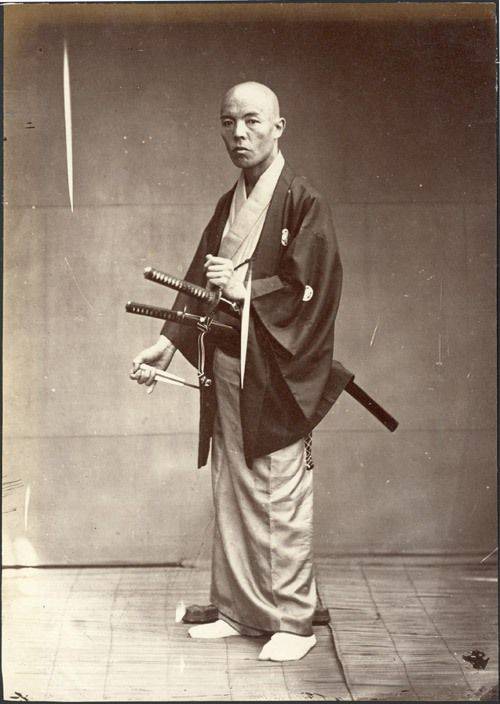
Old Japan was leaving, but left us the memory of the photos. Here is one of the samurai in home dress. It is possible that Sakamoto's father looked like that.
He appeared on the stage of history at that crucial moment when Japan was recovering from the long absolutism of the Tokugawa era and was becoming accustomed to contemporary modernity. He was neither a glorified warrior nor a powerful daimyo ruler, but for some reason many Japanese honor his name, believing that by his example he pointed the right way to new generations. When the Japanese elite shuddered, anticipating the beginning of a new bloody terror in the country, the person we’re talking about later wanted to lead Japan through peaceful changes, and not follow the example of Tokugawa Ieyasu, ruthlessly destroying all his opponents. It would be interesting to put this story as a play with bright Japanese costumes, meaningful poses, and memorable dialogues. Of course, not all the events shown in it took place at the same time and, of course, they took place in different places. Surprisingly, however, as far as everything that happened then reminds everything that happened and here just yesterday, and in something even goes on ...
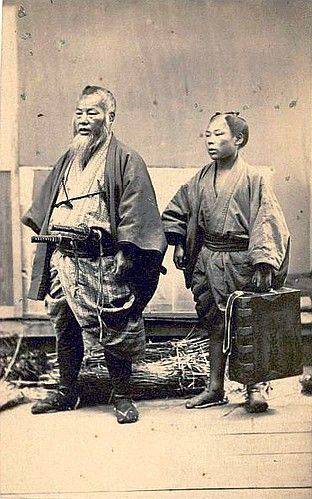
Samurai and his attendant.
Act One: Sakamoto Ryoma and Blood Debt
A dream saw - I keep it a secret
And I smile ...
(Show)
Sakamoto Ryoma, the second son of Sakamoto Heinati, was born on November 15 1835 of the year, exactly 235 years after the famous Battle of Sekigahara, which separated Japan forever between the time before it and the time after. The Sakamoto family was descended from a commoner samurai from Tosa, and they moved to the city of Kochi from the village. In the city she became engaged in usury and became rich with time, after which she acquired the rank of govt - lower samurai. Then Ryoma's father received a rank and abandoned the family business, apparently always ashamed of him in his heart.
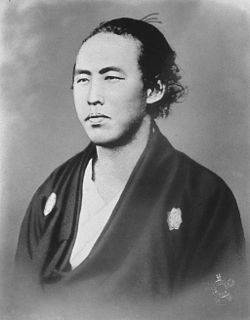
Photo Sakamoto Ryoma.
All samurai Tosa were divided into two groups. Supporters of Yamanauti, who supported the Tokugawa battlefield, were called jсиshi, or the highest samurai, and the rest were called goshi, or "rural warriors." Arrogant rulers constantly humiliated and oppressed gosti, these persecutions were reflected even in the laws by which samurai gosi had to wear special shoes; wooden geta sandals were forbidden to wear. It is not difficult to understand that such an appeal of Yamanauti with his subjects, from which they suffered more than 200 years, during the peaceful period of Tokugawa’s rule, aroused a desire for revenge in all the states.
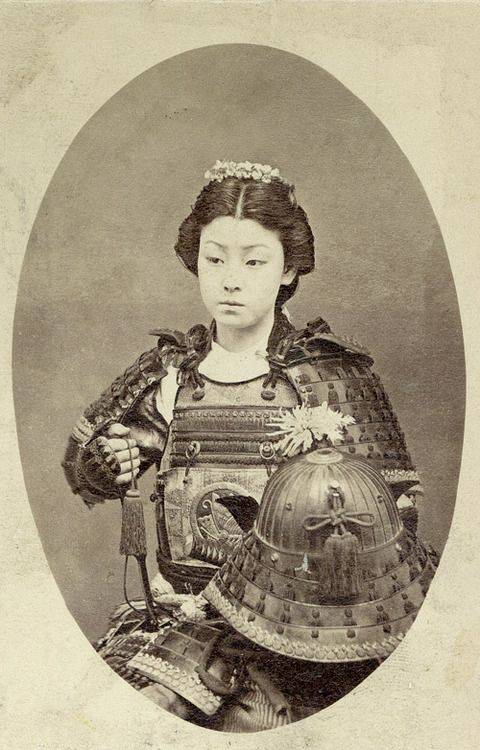
Onna-Bougay - a female warrior In the history of Japan, they were not uncommon.
Ryoma's father was well-versed in both martial arts and versification, and in calligraphy. Ryoma's mother died very young, and he was very attached to his sister, who was only three years older than him, but she rode horseback, no worse than men, fired from a bow and fencing on swords and naginata.
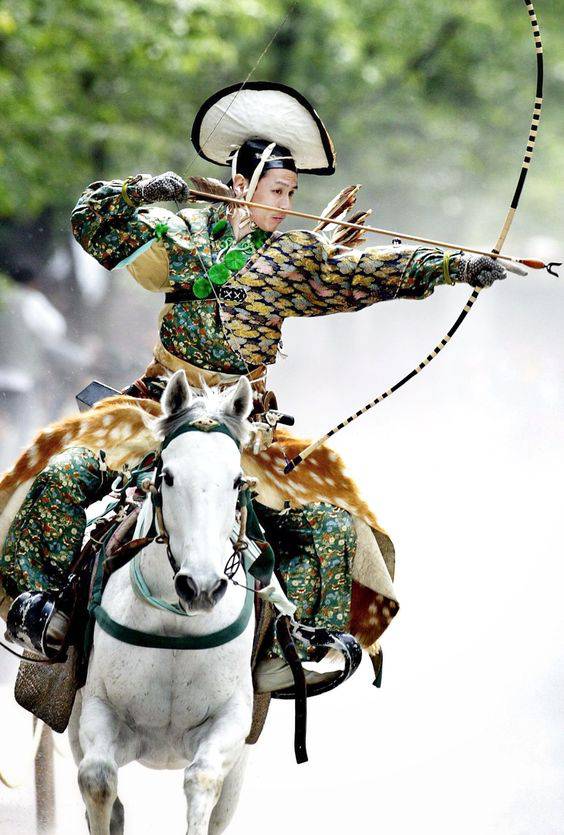
Equestrian exercise yabusame. Not only men were keen on this, but also women.
Ryoma often stayed with his uncle, a successful merchant, in whose house he became acquainted with the world of commerce. Diverse education and the ability to ask questions as much as possible taught the young man to think and reason.
And then a terrible thing happened: in 1853, four warships of the American commander Perry entered the Tokyo Bay and demanded from the emperor permission to stop in the Japanese ports to all other American ships. Bakufu Tokugawa - the supreme government of Japan, located in Edo, failed to defend the ban imposed by several years earlier on parking in Japanese ports for all foreign ships and decided to open borders and submit to the demands of the US government. It was surprising, however, only a few. A few years before, the Dutch, who came from the only country whose ships were allowed access to the port of Hirato, reported bakufu about the outcome of the Opium War 1839-1842, in which China suffered a humiliating defeat from foreigners. And they knew that the position of Japan in Asia was quite precarious and there was little sense from its isolation. But despite the fact that Bakufu made the only right decision (since there was absolutely nothing for the Japanese to oppose the Perry guns) to accept the inevitable invasion of foreigners, this caused a strong reaction from all those who used to consider the land of Japan sacred.
One of the black ships of Commodore Perry. Japanese drawing.
In 1854, Ryoma came to Edo to study at the famous fencing school. Samurai capital literally boiling with indignation, talk of war was heard everywhere. It is not surprising that when a collection of warriors was announced in the Khan (district) of Tosa to protect the coast of Sinagawa, Ryoma joined the patrol detachment. He was nineteen years old, and he understood that the world was changing.
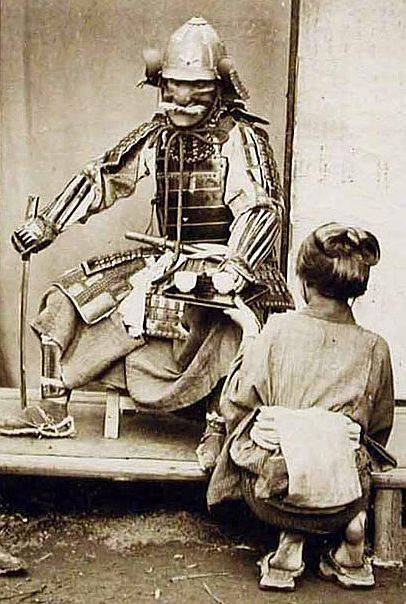
Japanese woman helps a samurai to dress up in armor. So the stories that the samurai did not need the help of a servant to put on their armor were not based on anything. Although, of course, some poor Ashigaru could do it himself, and for a European, all the warriors with swords were samurai.
In 1856, under the terms of the agreement with the US government, Consul General Harris came to Japan. He sought a US-Japan trade agreement; and advisers to bakufu, having come to the conclusion that it was impossible to refuse him, sent a letter to the emperor in Kyoto with a request to allow them to open the country. But the court of the emperor Komei adhered to traditional views, and refused to bakufu. The situation was aggravated by an internal conflict over the inheritance of the title of shogun, because of which the Tokugawa clan was split into two camps.
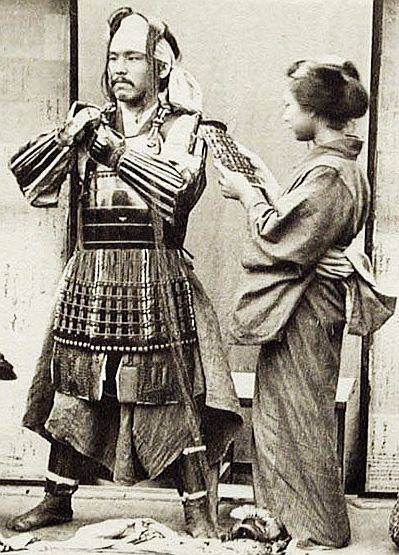
But the wives of Western Knights did not help their husbands to dress. Although they sewed clothes for them, they embroidered pennants and helmet ornaments.
Then, in 1858, Ia Naosuke of Hikone Khan, being the confidant of the Shogun, entered into a trade agreement with America without Kyoto’s permission and resumed the persecution of the opposition. Not tolerating such a clear manifestation of dictatorship, the conservative samurai killed Yi right at the gates of Edo Castle at the beginning of 1860. In the same year, young Sakamoto graduated from the martial arts school and returned to Tosa, gaining fame as a young but budding sword master.
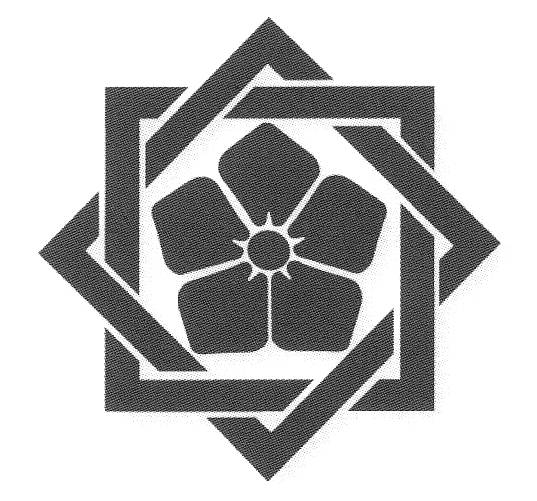
Mon Sakamoto Ryoma.
In Tosa, meanwhile, supporters of the “sacred land” formed the party Tosakinnoto, which without hesitation dealt with everyone who dared to oppose it. And here Ryoma decided to join the party of ultranationalists. Then he returned to Edo again and entered Chiba's fencing school. Here he wanted to meet with Katsu Rintaro Kaishu or Yokoi Shonan - the most famous supporters of the opening of the borders of Japan. The intentions of Ryohm, a member of the ultranationalist party, looked rather suspicious, but Kaisu nevertheless agreed to meet with him. When Ryoma was led into the reception room, Kaisu said: “You're here to kill me. Let's first talk about what is happening in the world, and then do as you know. ” Both were skilled swordsmen, but weapons never bared.
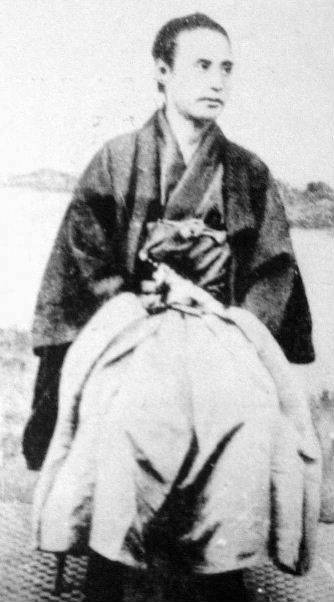
Katsu Kaishu.
Act Two: Sea and Cannons
Pages of books on the tray.
Spring wind ...
(Quito)
Katsu Kaishu was born in 1823 year in the family of Katsu Kokichi and was a member of the Tokugawa clan in Edo. But although he served bakufu, Katsu Kaishu was so poor and, in order to make ends meet, he decided to open a school of Dutch. At the age of twenty-five, he was sent to the bakufu naval defense department. Knowing about the Dutch culture, Katz understood well what was happening in Asia. Many young people learned from him - and not only the children of bakufu officials, but also the inhabitants of the provinces who wanted to learn at least something about the big world around Japan.
American warship. Japanese drawing.
In 1860, Katsu crossed the Pacific Ocean on the Japanese Canrin Maru, bound for the United States to conclude a trade agreement. In 1862, by the time he met Sakamoto Ryoma Katsu, he was engaged in marine affairs fleet to the bakufu.
After a long conversation, Ryoma decided to become a Katsu student too. In his diary, Katzu wrote: “Sakamoto came to my house with his friend Tiba Sutaro, a swordtail. From early evening until midnight, I talked with them about the reasons why we have to look at the world in a new way, about the need to create a new fleet to protect Japan from the colonialists. He [Ryoma] admitted that he wanted to kill me, but after my lecture he was ashamed of his ignorance, realizing that he could not imagine Japan’s position in Asia, and announced that he would be my student. And then he will make every effort to create a fleet ... After the meeting, Ryoma explained to his friend that he had come to settle accounts with me. I just laughed. He is not without dignity and, in the end, has shown himself to be a decent person. ”
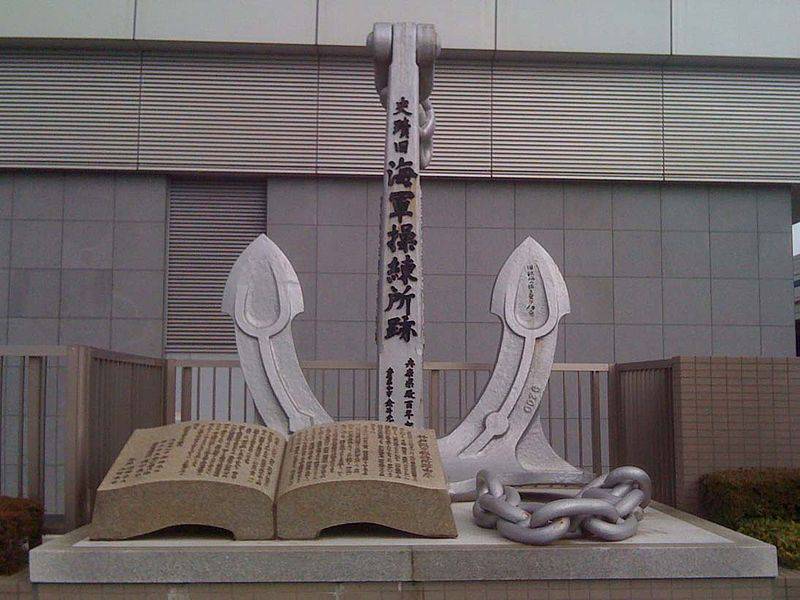
At the entrance to the cadet training center for the navy in Kobe.
Formerly, the sea school in Tsukiji was open only to those who were going to serve bakufu, but Kaishu decided to open a new school of naval officers in Kobe specifically for capable provincial youth. Kaisa was convinced of the need to establish such a school of advisers to bakufu, influential daimyo and court aristocrats.
It was difficult to achieve agreement, since each proposal became another reason for conflict between supporters and opponents of the opening of borders. While Kaisa was in Kyoto, some samurai attacked him, but his bodyguard saved his master. Continuing to fight for the new naval school, Kaisyu invited the shogun Tokugawa Iemoti himself to board his own steam vessel. On this ship, he received permission to create a naval school in Kobe.
Of course, one of the first to enter this school was Sakamoto Ryoma. Kaisa was only happy about this circumstance, as Ryoma was well able to raise the morale of the students. Bakuku's financial support was not enough for the needs of the school, and Ryoma went to his friend Daimyo Echiten and asked him to invest money in the school. In many ways, Ryoma soon became the leader of Kaisa's disciples.
When foreign ships were threatened with reprisal by stubborn nationalists from Choshu, who fired on the ships of the United States, France and the Netherlands in 1863 in Shimonoseki, the adviser to Bakuf ordered Katsu Kaisu to negotiate and settle the matter with representatives of foreign powers. Together with Ryoma and other students, Katsu went to Nagasaki and entered into a discussion with foreigners, hoping to resolve the conflict in peace, but these negotiations did not lead to an agreement, it was only possible to postpone further actions for two months. Ryoma did not return with him to Edo, but visited his second mentor, Yokoi Shonan, in Kumamoto.
Shonan came from a low-ranking samurai family in Kumamoto. For his ideas, he was accused of a “non-Samurai approach,” and was forced to return to his home. Visiting Syonan Ryoma, complained that Thyushu was thrown to Bakufu at the mercy of the alien fleet, but in response he advised him to be patient and not to rebel, but to behave cautiously. “That which bends can straighten,” he said. “That which does not bend breaks sooner or later!”
Meanwhile, supporters of the idea of expelling foreigners in Tosa and Taoshu resorted to terror to intimidate supporters of bakufu in Kyoto. One by one, those who were supporters of bakufu were killed; Bakufu police retaliated, and soon blood was shed all over Kyoto.
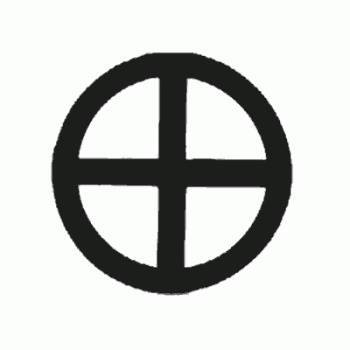
Mon Shimazu from Satsuma. But this is not a cross, but ... bit!
A year earlier, Shimazu Hisamitsu of Satsuma, a loyal vassal of bakufu, did not hide his hostility towards the movement against bakuf that unfolded in Tosu. He sought to reorganize the government and was even recommended as a shogun’s advisor. But reforms are reforms, and arrogance is arrogance. As a result, bakufu refused to provide Hisamitsu with a government vessel when he needed to return to Satsuma.
He therefore had to go home by land, and just during this trip one of his entourage killed Englishman Charles Richardson in Namamugi because the stranger did not show respect and did not step aside, letting Hisamitsu retinue pass.
This incident caused a storm of indignation among the British. In Satsuma Bay, they appeared demanding the reparation and punishment of those responsible. Lord Satsuma refused, but soon regretted it, since the British warships began shelling the city of Kagoshima. During the negotiations, Satsuma agreed to fulfill the demands of the foreigners. After the incident between the British and Shimazu established quite friendly relations. This did not surprise anyone in Japan: throughout the history of the country, countless daimyo united with former enemies, who had proved their strength and power to them, and nobody considered it reprehensible! Lord Satsuma knew how to recognize someone else's power and enlisted the help of the British in modernizing his troops! Well, and the British did not go for it with a kind heart, by no means. Thus, they wanted to undermine the influence of the French, who were more and more crowded around bakufu.
In July, 1863, an extremist from Choshu, was attacked by a group of synsengumi - bakufu police; This happened at Ikedai inn in Kyoto. The head of the police, Kondo Isami, with four Swordsmen, made his way into the room where the secret meeting was held by the supporters of isolation from Choshu and Tosa, and killed five. The rest of the warriors were waiting for him outside and killed eleven more, so only a few managed to escape. The case in Ikedai only inflamed the members of the joi in Choshu; they gathered an armed detachment and at the beginning of 1864, they approached the emperor's residence in Kyoto to capture it.
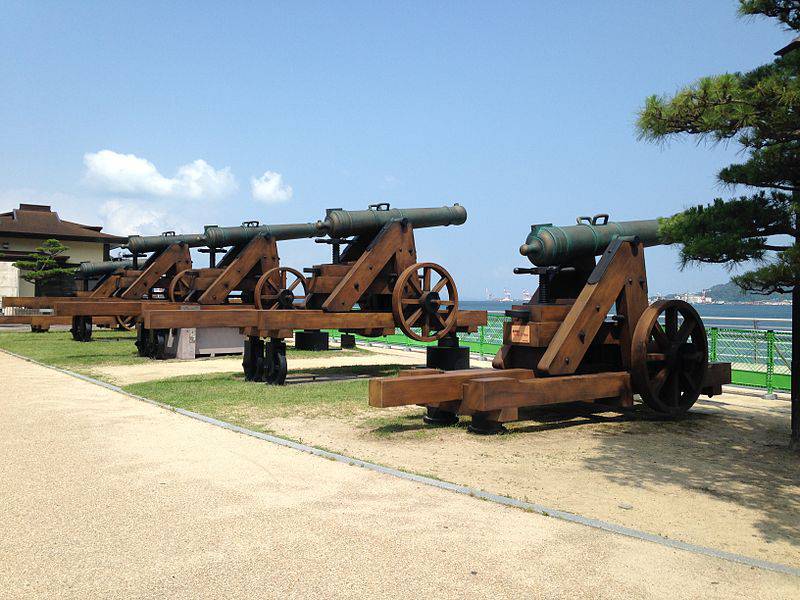
Guns coastal batteries in Shimonoseki.
The warriors from Khan Aizu, with the assistance of the Satsuma detachment, stopped the onslaught of the attackers right at the gates of the imperial palace. This episode made bakufu think about the influence of the Khans Tosa and Satsuma on the emperor Ko-mei. The shogun Iemoti considered the most effective removal from the game of the powerful daimyo Choshu and Satsuma so that they would not unite against the bakufu.
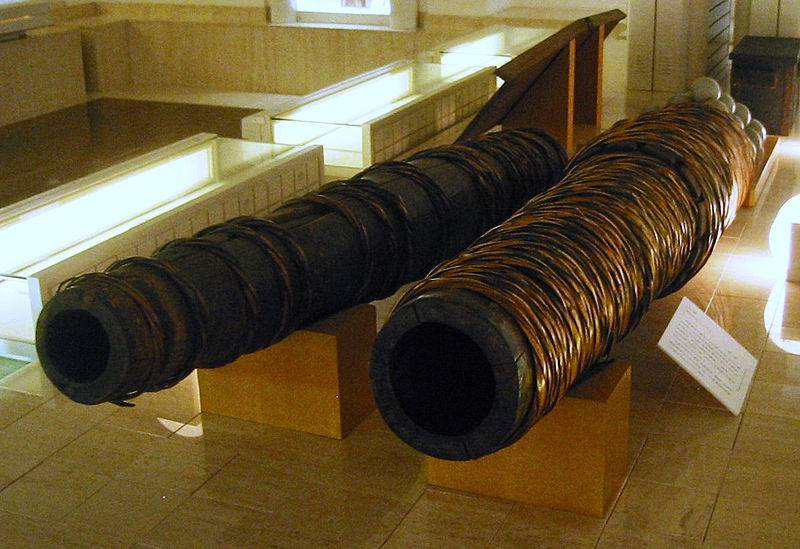
Japanese wooden tools. Yes, there were such!
Meanwhile, in August, 1863, the British ships shelled the capital of Satsuma, Kagoshima, since the payment of compensation for the murder of a British merchant had expired. This led to large casualties among the civilian population, because the fire was fired from naval guns through blocks of houses built of wood and paper. Emperor Komei ordered the punishment of Choshu khan, but first the ships of four states began military operations in the Kan-mon strait and began shelling the coastal bastions of Choshu on Shimonoseki. Under heavy fire from the ships, the bastions were silenced one by one; the English marines shot their defenders out of guns or taken prisoner.
Shimonoseki coastal batteries fire on European ships. From the collection of the city museum in Shimonoseki.
The European international squadron (Denmark, France, England and the United States) shelled Shimonoseki. Painting by Jacob Edward van Hemskerk van Best.
A punitive bakufu detachment led by Tokugawa Yoshikatsu left Osaka for Choshu in September. Shortly before this, in August, Katsu Kaishu ordered Sakamoto Ryoma to visit one of the senior officers of this punitive detachment, hailing from Khan Satsuma, and talk to him.
To be continued ...
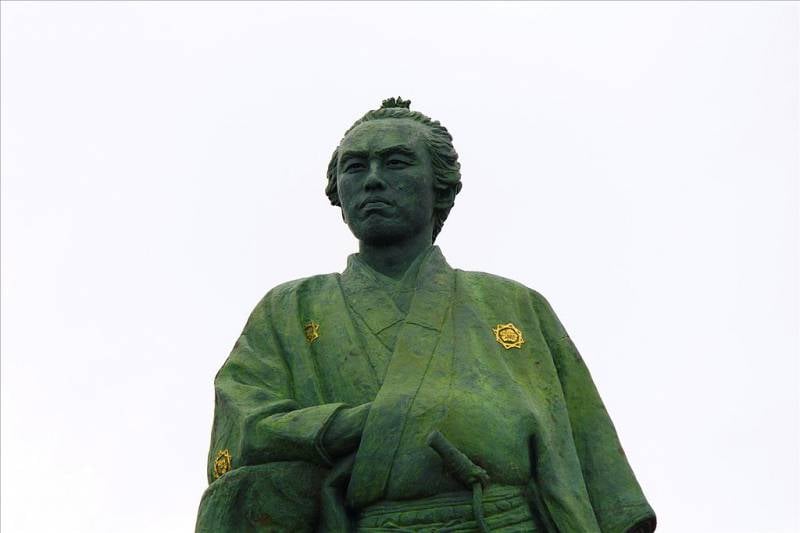
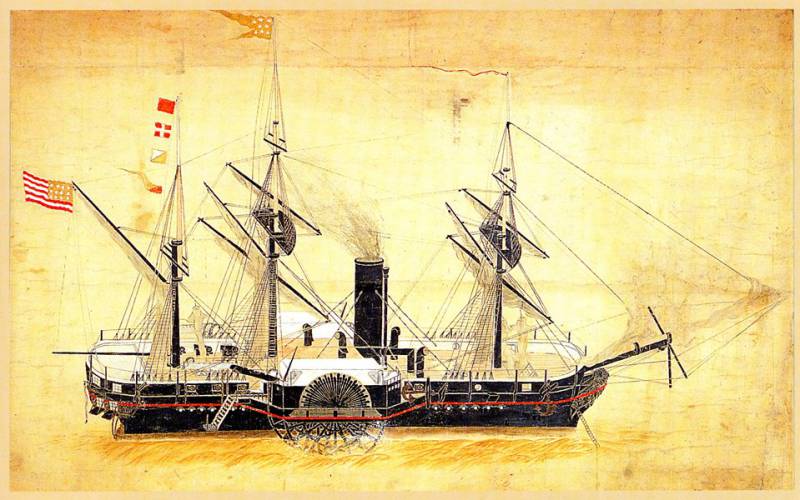
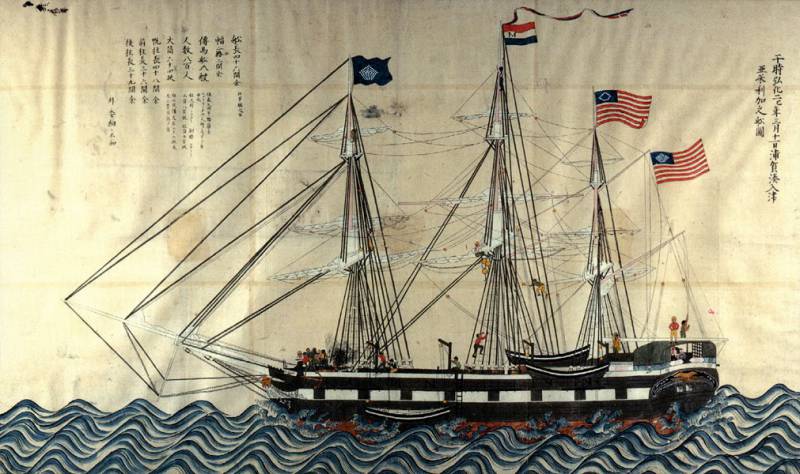
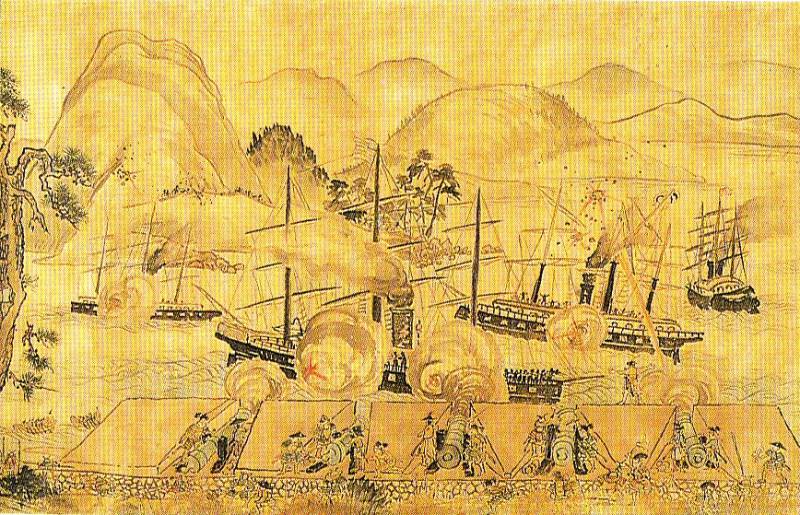
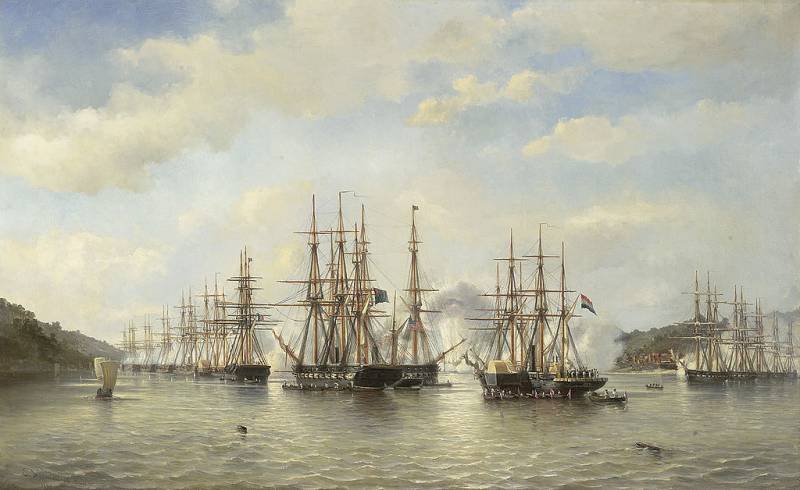
Information